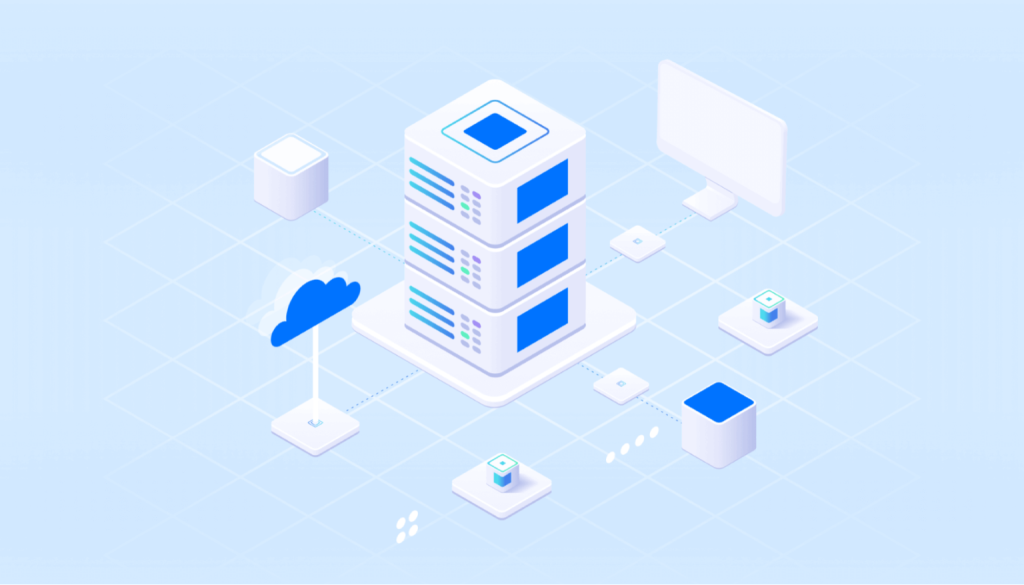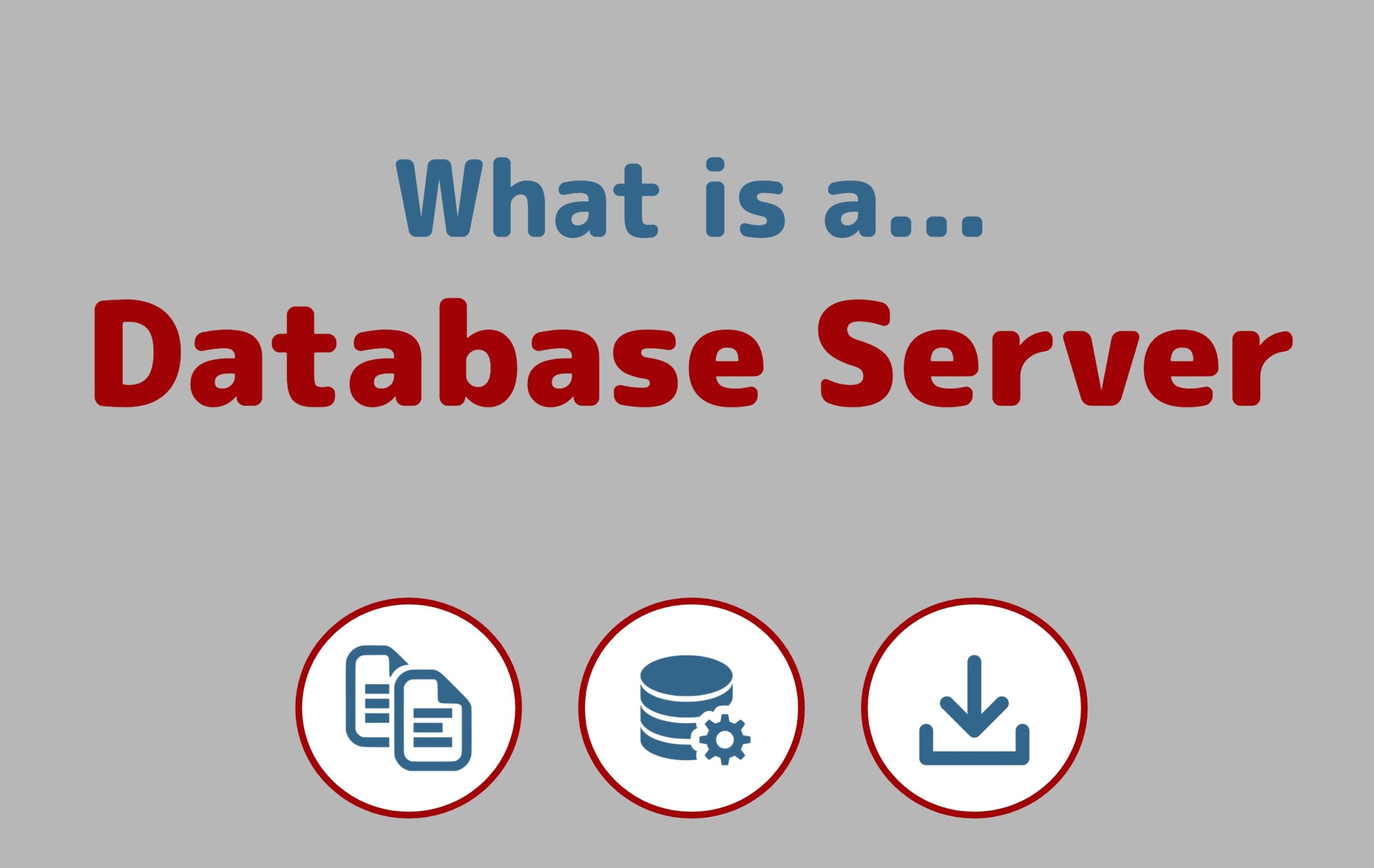A Database Server is a dedicated server (a physical or virtual machine) that provides database services to other computers or applications. It is responsible for hosting databases, managing data storage, handling data requests, and ensuring data integrity and security. The server runs a Database Management System (DBMS), such as MySQL, PostgreSQL, Microsoft SQL Server, or Oracle Database, which provides an interface to manage, query, and retrieve data stored in databases.
Table of Contents
Introduction
A database server runs a database management system and provides database services to clients. The server manages data access and retrieval and completes clients’ requests.
What is Data?
Data is a collection of a distinct small unit of information. It can be used in a variety of forms like text, numbers, media, bytes, etc. it can be stored in pieces of paper or electronic memory, etc.
Word ‘Data’ is originated from the word ‘datum’ that means ‘single piece of information.’ It is plural of the word datum.
In computing, Data is information that can be translated into a form for efficient movement and processing. Data is interchangeable.
What is a Database?
A database is an organized collection of structured information or data, typically stored electronically in a computer system. It’s designed to allow efficient retrieval, insertion, and updating of data, as well as various operations like sorting, filtering, and aggregating.
Databases are essential for managing and storing large volumes of data in a structured manner. They provide a structured way to store, manage, and retrieve data, allowing users to interact with the data in a meaningful way. Databases are widely used in various applications and industries, including business, finance, healthcare, education, and more.
There are different types of databases, including relational databases, NoSQL databases, and NewSQL databases, each suited for different types of data and applications.

What Is a Database Server Used For?
A database server serves as a centralized hub for managing and storing data, providing various functionalities that enable efficient data management and access. Here are some key uses of a database server:
- Data storage: The primary purpose of a database server is to store data in a structured format. It provides a reliable and centralized repository for storing large volumes of data, which can be accessed and manipulated as needed.
- Data retrieval and manipulation: Database servers allow users or applications to retrieve, insert, update, and delete data from the database using queries or commands. This enables users to interact with the data stored in the database and perform various operations on it.
- Data integrity and consistency: Database servers enforce data integrity constraints to ensure that the data stored in the database remains accurate and consistent. This includes enforcing constraints such as primary keys, foreign keys, and data validation rules.
- Concurrency control: Database servers manage concurrent access to the database by multiple users or applications. They implement mechanisms such as locking and transaction isolation levels to ensure that data remains consistent even when accessed and modified by multiple users simultaneously.
- Security: Database servers implement security measures to protect the data from unauthorized access and manipulation. This includes authentication mechanisms to verify the identity of users, authorization mechanisms to control access to the data, and encryption to secure data transmission and storage.
- Backup and recovery: Database servers provide mechanisms for backing up the data stored in the database and restoring it in case of data loss or corruption. This ensures that data remains available and recoverable in the event of unexpected failures or disasters.
- Performance optimization: Database servers include features for optimizing the performance of database operations. This may include query optimization techniques, indexing mechanisms, and caching strategies to improve the speed and efficiency of data retrieval and manipulation.
How Does a Database Server Work?
A database server works by managing the storage, retrieval, and manipulation of data stored in a database. Here’s a simplified overview of how a database server typically works:
- Database Management System (DBMS): The core component of a database server is the Database Management System (DBMS). The DBMS is responsible for managing the database, handling user requests, and performing various operations on the data.
- Connection Establishment: When a client application or user wants to interact with the database, they establish a connection to the database server. This connection allows them to send queries and commands to the server and receive responses.
- Query Processing: Once the connection is established, the database server receives queries or commands from the client. These queries can be in the form of SQL (Structured Query Language) statements or other database-specific commands.
- Query Optimization: Before executing the query, the database server may perform query optimization. This involves analyzing the query to determine the most efficient way to retrieve the requested data. The server may generate an execution plan that outlines the steps needed to execute the query in the most efficient manner.
- Data Retrieval and Manipulation: After optimization, the server executes the query against the database. It retrieves the requested data and performs any necessary data manipulation or calculations as specified in the query.
- Concurrency Control: If multiple users or applications are accessing the database simultaneously, the database server implements concurrency control mechanisms to ensure data consistency. This may involve using locks to prevent conflicting operations from interfering with each other.
- Transaction Management: The database server manages transactions, which are sequences of operations that must be executed as a single unit. It ensures that transactions are executed atomically (all or nothing), consistently (maintaining data integrity), and durably (making changes permanent).
- Security: The database server enforces security measures to control access to the database and protect the data from unauthorized access or manipulation. This includes authentication mechanisms to verify the identity of users, authorization mechanisms to control access rights, and encryption to secure data transmission and storage.
- Logging and Recovery: The server logs changes made to the database, allowing it to recover from failures or errors. In the event of a system crash or data corruption, the server can use the transaction log to restore the database to a consistent state.
- Performance Optimization: Database servers employ various techniques to optimize performance, such as indexing, caching, and query optimization. These techniques help improve the speed and efficiency of data retrieval and manipulation operations.
What are the components of a database?
While the different types of databases vary in schema, data structure and data types most suited to them, they are all comprised of the same five basic components.
- Hardware. This is the physical device that database software runs on. Database hardware includes computers, servers and hard drives.
- Software. Database software or application gives users control of the database. Database management system (DBMS) software is used to manage and control databases.
- Data. This is the raw information that the database stores. Database administrators organize the data to make it more meaningful.
- Data access language. This is the programming language that controls the database. The programming language and the DBMS must work together. One of the most common database languages is SQL.
- Procedures. These rules determine how the database works and how it handles the data.

Database Server Examples
There are several popular examples of database servers, each with its own strengths and features. Here are some well-known examples:
- MySQL Server: MySQL is one of the most widely used open-source relational database management systems. It is known for its reliability, scalability, and ease of use. MySQL is often used in web applications and is supported by various platforms, including Linux, Windows, and macOS.
- Microsoft SQL Server: SQL Server is a relational database management system developed by Microsoft. It is widely used in enterprise environments and offers features such as transaction processing, business intelligence, and data warehousing. SQL Server runs on Windows operating systems and is available in various editions to suit different needs, from small businesses to large enterprises.
- Oracle Database: Oracle Database is a powerful relational database management system developed by Oracle Corporation. It is widely used in enterprise environments for mission-critical applications. Oracle Database offers features such as high availability, scalability, and advanced security options. It runs on various platforms, including Linux, Windows, and Unix.
- PostgreSQL: PostgreSQL is an open-source relational database management system known for its advanced features and extensibility. It supports a wide range of SQL features and offers features such as JSON support, full-text search, and geospatial data processing. PostgreSQL is often used in web applications, mobile apps, and data analytics projects.
- MongoDB: MongoDB is a popular open-source NoSQL database management system that stores data in flexible, JSON-like documents. It is known for its scalability, high performance, and ease of use. MongoDB is often used in applications that require flexible data models and fast development cycles, such as content management systems, e-commerce platforms, and mobile apps.
- SQLite: SQLite is a lightweight, embedded relational database management system that is self-contained and requires minimal configuration. It is often used in applications that require a simple, file-based database solution, such as mobile apps, desktop applications, and small-scale web applications.
Conclusion
These are just a few examples of database servers, and there are many other options available, each with its own unique features and capabilities. The choice of database server depends on factors such as the specific requirements of the application, performance considerations, scalability needs, and budget constraints.
